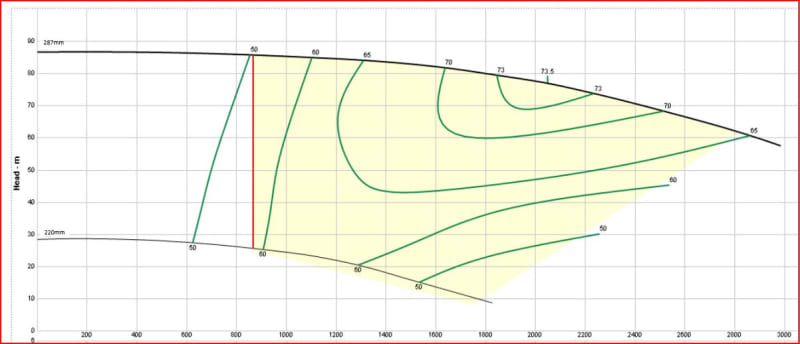ER_Azza
Mechanical
- Jul 18, 2018
- 54
Hi All
A bit rusty with pump stuff. Any rotating equipment guru out there if can help me I appreciate it.
I am looking at centrifugal pump curve (Dead head at 85m)
Based on water.
However, the system I am looking at has slurry. SG at 1.25.
I remember the head don't change, pressure do. (p = 0.0981 x h x SG)
Theoretically, does that mean the dead head pressure will increase, assuming using the same motor?
A bit rusty with pump stuff. Any rotating equipment guru out there if can help me I appreciate it.
I am looking at centrifugal pump curve (Dead head at 85m)
Based on water.
However, the system I am looking at has slurry. SG at 1.25.
I remember the head don't change, pressure do. (p = 0.0981 x h x SG)
Theoretically, does that mean the dead head pressure will increase, assuming using the same motor?

